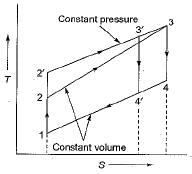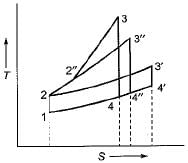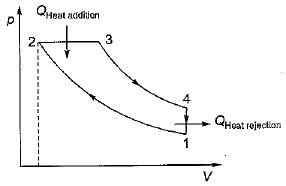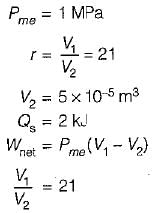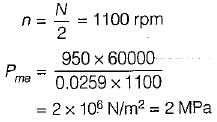Test: Air Standard Cycles - 3 - Mechanical Engineering MCQ
10 Questions MCQ Test - Test: Air Standard Cycles - 3
Air standard diesel cycle has a compression ratio of 14 and cut off takes place at 6% of the stroke. What is the cut off ratio?
A single cylinder compression ignition engine, operating on the air-standard diesel cycle, has a mean effective pressure of 1.0 MPa and a compression ratio of 21. The engine has a clearance volume of 5 x 10-5m3. The heat added at constant pressure is 2.0 kJ. The thermal efficiency of the engine is
Match List-I with List-ll and select the correct answer using the codes given below the lists:
List - I
A. Compression ratio
B. Pressure ratio
C. Cut-off ratio
D. Expansion ratio
List - II
1. Brayton cycle
2. Diesel cycle
3. Dual combustion cycle
4. Otto cycle
Codes:
A B C D
(a) 1 4 3 2
(b) 1 4 2 3
(c) 4 1 2 3
(d) 4 1 3 2
In a spark ignition working on the ideal Otto cycle, the compression ratio is 5.5. The work output per cycle (i.e., area of the P - V diagram) is equal to 23.625 x 105 x VcJ, where Vc is the clearance volume in m3. The indicated mean effective pressure is
A turbocharged four-stroke direct injection diesel engine has a displacement volume of 0.0259 m3 (25.9 litres). The engine has an output of 950 kW at 2200 rpm. The mean effective pressure (in MPa) is closest to
Which one of the following is NOT a necessary assumption for the air-standard Otto cycle?
For maximum specific output of a constant volume cycle (Otto cycle)


